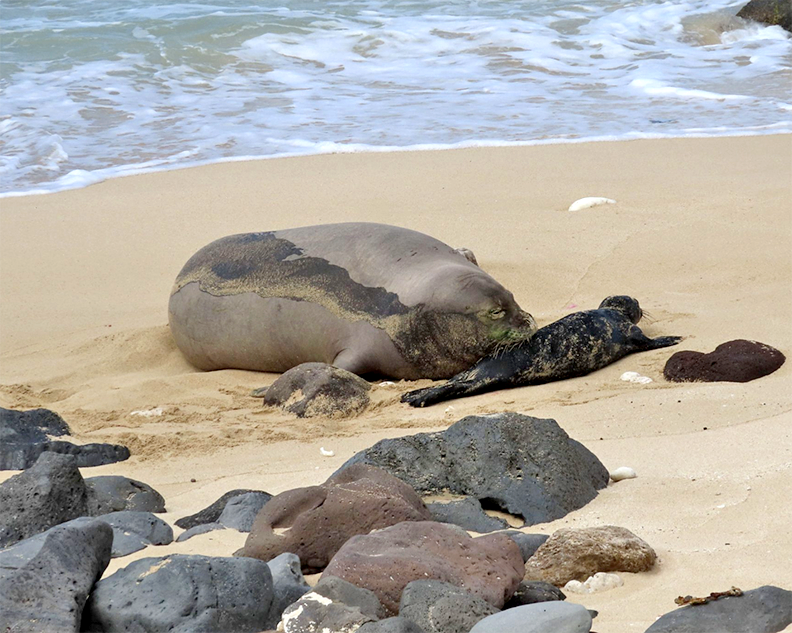By Jan TenBruggencate
Natural areas throughout Hawai`i and across the world have the confounding problem of often being loved to death.
Everybody wants to be there, but everybody being there ruins the reason everyone wants to be there.
Think Kalalau Valley in the 1970s, when in summer hundreds of people daily boated, helicoptered, hiked and swam into the valley to experience the natural wonders of the place.
(A far cry from just a decade or two earlier when the famed “Hermit of Kalalau,” Dr. Bernard Wheatley, lived there alone, camping in solitude in the big coastal cave.)
The state’s solution to the wear, tear and litter in Kalalau was to limit access, to establish a cap on camping permits, to prohibit helicopter landings and commercial boating.
The new system clearly reduced the damage to the public resource. But at the same time, it killed off sources of revenue for some Kaua`i businesses, and turned some Kalalau lovers into outlaws—people who camped illegally in the Kalalau jungle, hiding from authorities.
There was a conflict in the Kalalau situation: too much love leading to damage of the resource. There was a solution—perhaps not the best solution, but something.
Conflict resolution is an art, but as practiced, it’s not always good art.
One of the most spectacular hiking trails in the world must be the Alaka`i Swamp Trail. It leads through the crimson-flecked `ohi`a forests, along fern-shrouded streams, over bogs with miniaturized forests. And it has cloud-shrouded vistas at one trailhead and at the trail’s end.
But the Alaka`i is often wet—so wet that the trail grew broad mud holes. To avoid them, hikers skirted to each side to avoid the muck, tramping down a wider and wider highway through the pristine upland environment.
In some cases, the Alaka`i Trail was an Alaka`i Highway. Careless boots smashed acres of crisp sedges and carpets of the insectivorous native sundew miki nalo, whose leaves sprout tiny hairs with a drop of sticky fly-trapping sap.
In this case, the state’s solution was not to limit access—although that might have worked. Rather, it was to clearly identify the problem. The problem wasn’t the number of hikers. The problem was that they were wandering farther and farther afield.
The solution was a boardwalk. It is only a couple of feet wide, but it keeps hikers in the center of the trail, and the forest has been able to grow back in. The result is that the Alaka`i Trail can carry far more people into its wonders than before, paradoxically with far less impact on the native vegetation.
In beloved bays around Hawai`i, boaters love to drop an anchor for fishing, snorkeling or just lazing away an afternoon. But those anchors do damage. One fix can be to ban anchoring. Another, in many cases, has been to install permanent moorings, which allow boating, but prevent anchor damage to corals.
If you first clearly define the actual problem, and then demand multiple solutions—often there’s a pretty good one.
Discover more from ForKauaiOnline
Subscribe to get the latest posts sent to your email.





Leave a Reply